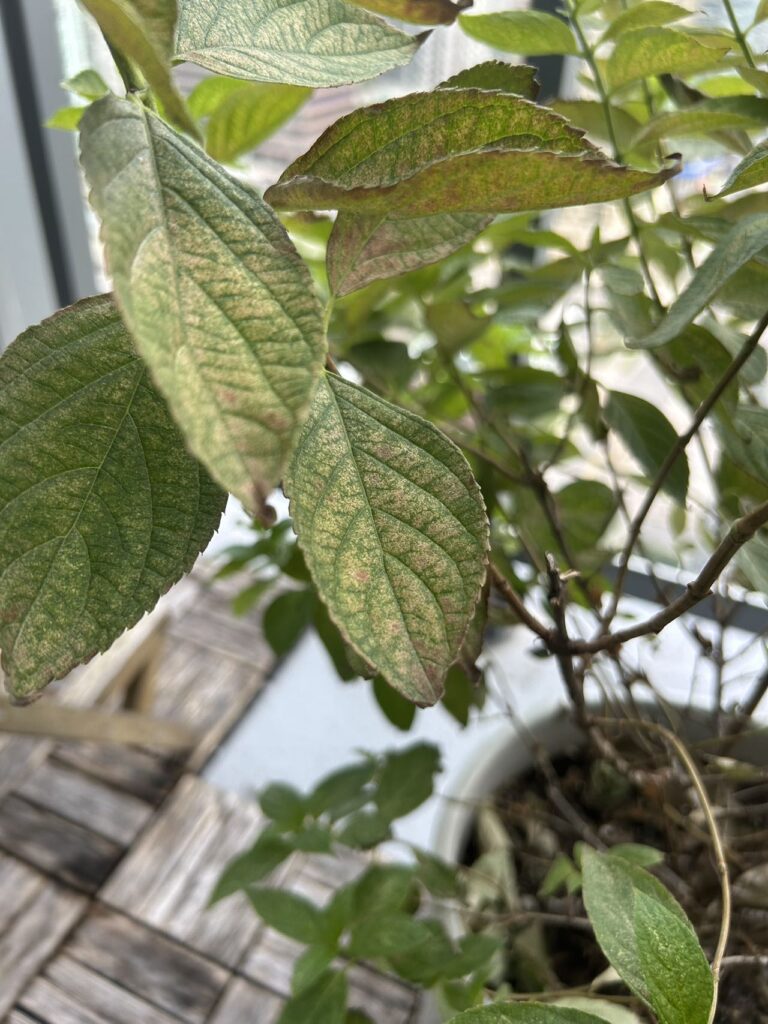
I got this hydrangea last year, and I planted in a pot outdoor. It was blooming well last year, and the leaf growth has been pretty good this year. However, the leaves were gradually turning yellow since it started to grow its flower balls. All of the leaves are affected by this, and majority of the leaves are now gone. The falling leaves are not completely yellow. The flower balls have also stopped growing.
I fed the plant with 20-20-20 fertilizers early spring. And my watering schedule has been pretty consistent with what I have been doing.
What could have gone wrong? And is there any remedy to improve the problem? Thanks!
It is unfortunate to have a plant that gave so much pleasure last year take a turn this year.
Brown, tan, yellowish or black spots on hydrangea leaves may be anthracnose. You can also identify it by cankers that form on stems and branches. Anthracnose can be fatal to hydrangeas, so prune out dead or diseased plant parts and destroy them.
Hydrangeas growing in a pot or newly planted in the ground have roots that are especially vulnerable to strong applications of fertilizer. When one observes yellowing and browning leaf edges and leaf tips a day or two after the plant has been fertilized, the roots may have been burned. Aluminum sulfate, which is sometimes added to the soil to change the color of hydrangea blooms, also can cause root damage if applied too liberally.
Thoroughly flush the hydrangea soil with water whether it is in a pot or in the ground. This should remove most of the salts from the soil. Then do not water the hydrangea for a day or two until the soil is slightly dry on the surface. Then water the plant as usual. If the hydrangea is grown in a container, make sure the water drains out the bottom of the pot after each watering. This will keep the salts flushed out on a regular basis (this applies to houseplants, too). After root-burn, do not fertilize again until the plant appears healthy, suggesting that it has developed a well-established root system.
We would encourage you to never fertilize a plant that is not completely healthy!
If any of the leaves also appear to be chlorotic, pale green, this means that the plant is not able to absorb iron and other trace minerals from the soil. Often high pH (i.e. basic soil) prevents these nutrients from being absorbed by the plant. You may consider amending your soil. To accomplish this, add a layer of really good triple mix. Two or three inches of organic matter including clumpy aged manure, might help strengthen the immune system of your hydrangeas, change the environment for the bugs, and help prevent reoccurrence of pest problems. No need to dig it in. Another idea is to remove some older plants to allow more air circulation as well as allowing the uptake of more available nutrients per plant.
Below is a link to an article which lists common hydrangea problems.
https://www.hgtv.com/outdoors/flowers-and-plants/trees-and-shrubs/a-hydrangea-
Good luck with your hydrangea.

